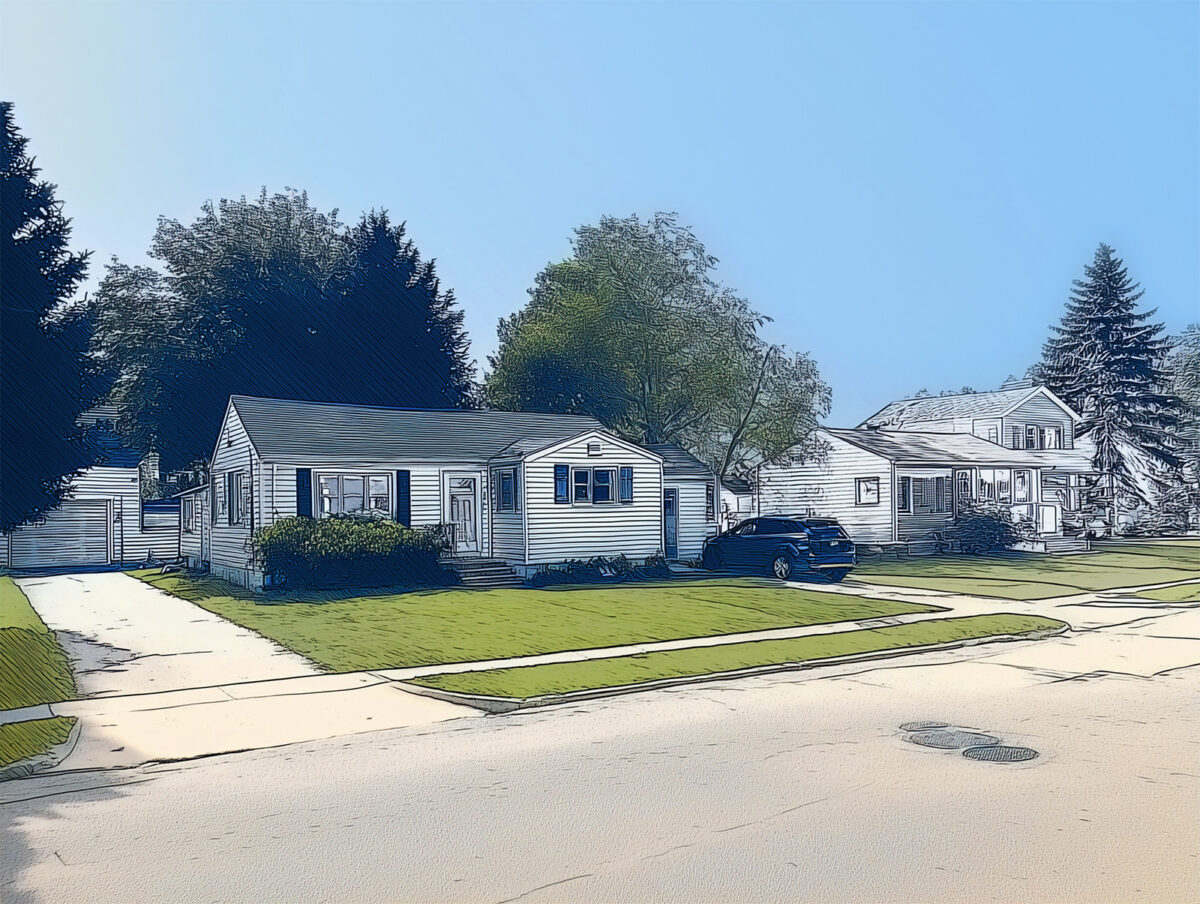Locked Out: Door County’s affordable housing shortage
Door County Knock is reporting an in-depth series on Door County’s affordable housing shortage, addressing questions such as why the county lacks affordable housing, how market trends have contributed to its decreased availability and what roadblocks exist to building more. Click here to read more.
If there are questions you’d like the answers to or people you’d recommend we talk with as part of our reporting, please email us at [email protected].
Door County needs more housing stock to meet demand. That includes “affordable” housing, as defined by the Department of Housing and Urban Development, but also workforce and market rate housing being available to those who can afford it. Building varied housing stock means more options and freeing up existing housing for those who may not be able to afford to own property or build themselves.
Door County has its own specific geographic and demographic factors that impact how the housing shortage is playing out locally. Being a long, skinny peninsula with mostly rural communities, it already costs developers more to get construction supplies and labor here. A seasonal, tourism-based economy, a larger aging population than the rest of the state, and a lack of public infrastructure like sewer and water are additional factors that make Door County an expensive place to build housing.
Expensive housing combined with a lower Area Median Income defines the crux of Door County’s housing shortage.
Mariah Goode is the former Door County Land Use Services director and serves on several housing organization committees and boards. “People in Door County don’t make enough money to rent or buy at (the prices) developers need to make money,” she explained. In areas with higher incomes, like Madison or even Green Bay, developers and landlords can charge more for rent than they can in Door County.
Area Median Income, or AMI, refers to the number right in the middle of annual incomes. Half of the incomes in that area are more than the AMI and half are less. For a family of four in Door County the AMI is $100,700 per year.
In order to gain understanding of the housing shortage in Door County, its causes, impact and possible solutions, one needs to understand the terms surrounding what type of housing is available,what is needed, and how those terms will be used throughout this series.
Workforce
When discussing housing, the term “workforce” is probably used as frequently and variably as “affordable.” Unlike affordable housing, however, workforce housing has less to do with how much the housing costs than who lives there.
Workforce households are generally considered to be middle income households making 60 percent to 120 percent of the AMI. These households often earn too much for affordable housing programs. Those who fall somewhere in the workforce definition of income might be able to afford market rate housing, but it may not be adequate for the number of people in that household.
Workforce members are teachers, healthcare workers, civil servants, shop clerks and other essential workers, Stephanie Servia said. She is a planner and zoning administrator for the City of Sturgeon Bay.
State lawmakers have shown bipartisan support for legislation to support workforce housing initiatives, including the Workforce Housing Package passed in 2023, a set of bills intended to promote development.
Lack of different levels of housing inventory is a “huge problem” in Door County, according to Servia, and the City of Sturgeon Bay is putting a lot of resources into providing more workforce housing.
In April, the Sturgeon Bay Planning Commission unanimously approved rezoning of 27.5 acres on the city’s west side to allow for smaller lot sizes and some two-family homes. Of the 58 lots, 27 are to be designated as workforce housing.
Kay Smith is the commercial lender for the Door County Workforce Housing Lending Corporation and she is on the board of the Door County Housing Partnership. Both organizations were created to address the disparity between what working families can realistically afford and how much it costs to build housing, according to Smith.
The WHLC was launched in 2021 with a $1.5 million investment from the Wisconsin Housing and Economic Development Authority. The corporation is expected to match the $1.5 million for a total of $3 million in funds to incentivize developers to build in Door County.
The WHLC has provided one loan so far to the Lofts at Cherry Lanes development, and there are a couple of other development loans in the early stages, according to Smith.
Developers that receive WHLC loans are required to provide one-year leases for renters and reserve 20 percent of the units for households making 80 percent of the AMI or lower. Those requirements are in place for 20 years, ensuring the housing does not get “flipped” or turned into short-term rentals, Smith said.
“It also avoids the trap of the seasonal or vacationing person using up the vacancies,” she said.
The Door County Housing Partnership addresses what it calls a “disconnect between market rate and year-round workforce income,” according to the organization’s website. Someone earning even 80 percent of the AMI and spending 30 percent of their gross income on a home mortgage, real estate taxes and insurance would struggle to have enough left over to cover food, transportation, health care, child care or other expenses.
The Housing Partnership provides subsidies of $60,000-$75,000 to bridge the gap between housing costs and what working families can actually afford.
Last summer, with partial funding from a WHEDA Workforce Initiative grant through United Way, the Housing Partnership broke ground on the first of ten houses in northern Door County intended for workforce community members.
Market rate
Market rate housing is simply housing that is available, priced based on market factors like supply and demand, condition and location, and is not subject to government subsidies or other special benefits.
In Door County, the average market price for a home is a little over $400,000 and has increased by 5.9 percent in the last year, according to Zillow. Average home prices fluctuate depending on the specific location, however. Waterfront property and property in more popular locations like Sister Bay are more expensive than listings in Sturgeon Bay or parts of southern Door County.
Any rental costing more than $1,000 per month Servia would consider market rate, she said. Door County is difficult to get an accurate picture of market rental rates because short term rental costs are factored into the average by sites like Zillow.
Regardless of averages, based on numbers from 2024, Smith said, a Door County resident must make at least $19.67 per hour to be able to afford a two-bedroom market rate rental at about $1,023 per month. The estimated hourly wage for a renter in Door County in 2024 was $14.64, she added.
“So that’s the issue we have,” Smith said.
However, with only 10 available market rate rentals available in Sturgeon Bay as of May 2025, there is still a need for market rate housing, Servia said. More market rate housing means households that can pay for it will move in, freeing up affordable and workforce housing for those who need it.
Seasonal
Another issue, relative to Door County’s economy, is the need for seasonal housing. Seasonal housing can mean housing for a seasonal workforce, most of whom work in the service industry during the busy tourism months of May through October. Seasonal housing also refers to rentals and vacation homes only occupied a few months of the year.
Door County has a long history of employing J-1 visa holders in its seasonal service industry. J-1 visas are part of a non-immigrant program designed to bring foreign students to the U.S. for work and study-based exchange. About 558 J-1 visa holders are projected to be in Door County this summer, according to a June 5 report by the Peninsula Pulse.
Employers are required to provide housing for J-1 workers, with some Door County businesses scrambling to do so, according to Goode.
“They’re getting creative,” she said, referring to dorms, repurposed buildings, campers and other forms of housing employers have come up with over the years.
Service workers who are not J-1 visa holders also flock to Door County for the money to be made during the tourism season. Knock has received reports of people coming to the peninsula to work with no housing arrangements, either living in their vehicles or sleeping on friends’ or relatives’ couches for the summer (look for more in-depth coverage in future housing series’ articles).
As far as other seasonal resident and visitor housing, second and third homes or short term rentals are prevalent in Door County. More than 500 short term rental units were added to Door County between 2018 and late 2022, according to a 2023 report by Knock. (Updated analysis of current short term rental information will be included in a future part of this series.)
While short term rentals and vacation home ownership contribute to housing pressure, they are not the main explanation for housing shortages and affordability issues in the county, according to Servia.
“The last time we went through and looked at all of our rental data, I found that the majority of people who have short term rentals live in the county. People always have these assumptions that it’s these people from Chicago or faceless companies owning all these,” she said.
An increase in out-of-area owners of short term rental properties was reported in Knock’s analysis, with local realtors, housing experts and vacation rental managers giving mixed responses as to how many of those new owners are investors versus second-home owners. Some said the split was about 50-50, according to the report.
There were about 50 short term rental units in the City of Sturgeon Bay in 2024, according to Servia, though she said she has not checked the 2025 numbers yet. That is not enough to be a problem, she added.
However, developers, builders and property owners can make more money on vacation rentals and expensive vacation homes, Servia said. Affordable and workforce housing “is a huge financial risk for people to undertake. And I think that’s a good point, that people don’t know that.”

